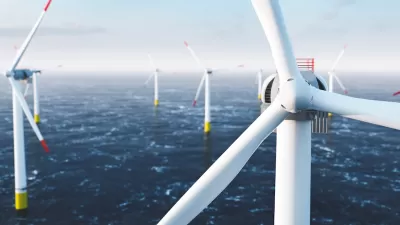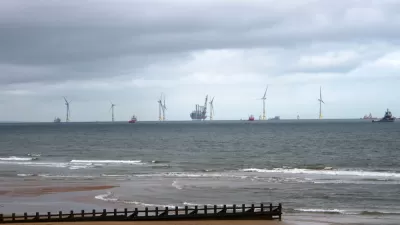Experts say the switch to renewables has more to do with political will and market forces than available technologies.
As it stands, New York state's renewable energy comes 20 percent from hydropower, 2 percent from wind and 2 percent from other sources, constituting a renewable energy capacity equivalent to that of the entire Northeast.
A recent joint Cornell and Stanford University study projects that with sufficient investment in renewables, the state could meet all of its energy needs through hydro, wind, solar biomass and landfill gas power by 2030.
To reach this target, the researchers anticipate that New York would have to supply half of its energy from 12,700 off-shore wind turbines, many of which would have to be built off the coast of Long Island.
Wind energy production faced a downturn with the onset of the economic recession and lower natural gas prices, but since 2004, New York has increased its capacity by more than 1500 megawatts.
FULL STORY: Ny renewable energy study finds new york could soon be powered by wind, water and sunlight

Alabama: Trump Terminates Settlements for Black Communities Harmed By Raw Sewage
Trump deemed the landmark civil rights agreement “illegal DEI and environmental justice policy.”

Study: Maui’s Plan to Convert Vacation Rentals to Long-Term Housing Could Cause Nearly $1 Billion Economic Loss
The plan would reduce visitor accommodation by 25% resulting in 1,900 jobs lost.

Why Should We Subsidize Public Transportation?
Many public transit agencies face financial stress due to rising costs, declining fare revenue, and declining subsidies. Transit advocates must provide a strong business case for increasing public transit funding.

Paris Bike Boom Leads to Steep Drop in Air Pollution
The French city’s air quality has improved dramatically in the past 20 years, coinciding with a growth in cycling.

Why Housing Costs More to Build in California Than in Texas
Hard costs like labor and materials combined with ‘soft’ costs such as permitting make building in the San Francisco Bay Area almost three times as costly as in Texas cities.

San Diego County Sees a Rise in Urban Coyotes
San Diego County experiences a rise in urban coyotes, as sightings become prevalent throughout its urban neighbourhoods and surrounding areas.
Urban Design for Planners 1: Software Tools
This six-course series explores essential urban design concepts using open source software and equips planners with the tools they need to participate fully in the urban design process.
Planning for Universal Design
Learn the tools for implementing Universal Design in planning regulations.
Smith Gee Studio
Alamo Area Metropolitan Planning Organization
City of Santa Clarita
Institute for Housing and Urban Development Studies (IHS)
City of Grandview
Harvard GSD Executive Education
Toledo-Lucas County Plan Commissions
Salt Lake City
NYU Wagner Graduate School of Public Service





























